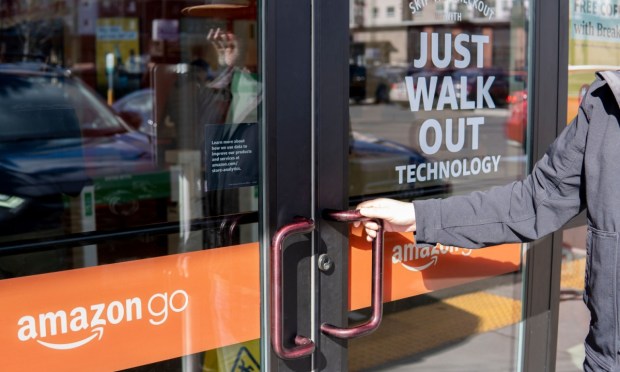
Amazon is scaling back its artificial intelligence (AI) system that lets customers leave stores without having to provide payment, and experts say there are lessons to be drawn from this decision.
The retail giant’s recent move to install Dash Carts in place of its Just Walk Out technology at its U.S. Amazon Fresh stores — a system designed to automate the shopping experience by eliminating the need for traditional checkouts — has ignited a dialogue among experts regarding the current state and future potential of AI in retail. The move highlights the challenges faced by integrating AI technologies into retail environments.
“Amazon designed a ‘sensor fusion’ system that led to cost and accuracy challenges,” Will Glaser, founder and CEO of Grabango, a rival provider of checkout-free technology for grocery and convenience stores, told PYMNTS. “AI in retail is as viable as ever. The limitation of AI for JWO is that it is prohibitively expensive to install and operate.”
Amazon’s AI tech may have run into some down-to-earth snags. According to The Information, JWO wasn’t fully autonomous but relied on around 1,000 employees in India who monitored the items customers picked up, put back, and finally took them from stores equipped with Amazon’s Just Walk Out technology, something that Amazon disputed.
An Amazon spokesperson told PYMNTS that there are more than 130 third-party Just Walk Out technology locations in the U.S., U.K., Australia, and Canada — with new locations launching monthly.
“The misconception that Just Walk Out technology relies on human reviewers watching shoppers live from India is misleading and inaccurate,” the Amazon spokesperson said. “As with many AI systems, the underlying machine learning model is continuously improved by generating synthetic data and annotating actual video data. Our associates validate a small portion of shopping visits by reviewing recorded video clips to ensure that our systems are performing at our high bar for accuracy, which is made possible because we continuously improve both our algorithms and use human input to correct them.”
Glaser said that JWO relies on shelf sensors and isn’t suitable for regular grocery stores at any scale. The shelving must be replaced entirely or retrofitted. “Even in small stores, those shelf sensors create thousands of single points of failure and must be brought down weekly for maintenance,” he added.
More importantly, Glaser said, systems like JWO can drive up operating costs. “Store teams, for example, need to constantly make sure each item is in the right place for the system to work,” he added. “Shelves also need to be reprogrammed anytime a new product is added. The additional labor hours required to support JWO more than outweigh any potential cost savings.”
Jackie Walker, retail experience strategy lead, North America at Publicis Sapient, a digital business transformation company, told PYMNTS that the hardware for JWO just didn’t make sense from a cost perspective.
“Unfortunately, in the U.S., we are always dealing with significant scale challenges, and with anything that requires instrumentation of a physical environment, scale is the enemy because scale means cost,” Walker added.
Amazon’s JWO isn’t the only retail AI system to encounter problems. For example, Walker said that Presto — the voice recognition software for fast food drive-thrus, which has been augmenting the AI with offshore staff synchronously placing orders — did not make meaningful enough progress on this either. She noted that Just Walk Out also lacked features that provide value for consumers, such as finding nearby store deals or viewing a running total of their receipts.
“When you are going to increase the perception of invading customers’ privacy with the use of cameras to track them, there needs to be commensurate value to the customer so they are able to see the mutual value exchange,” Walker added. “While avoiding a checkout line is certainly valuable, it is only part of the equation, and often comes with an additional tradeoff, like receipt review at Sam’s Club after using their Scan and Go technology.”
The setbacks with JWO might be more about how the technology needs to evolve than a commentary on AI itself, observers say. It’s important to remember that JWO was launched well before the generative AI boom of the last 18 months, Michael Zakkour, the founder of 5 New Digital, a retail and digital commerce consultancy, told PYMNTS.
“The AI that was in place was a more traditional algorithm and data-driven back-end tech that has worked well in eCommerce, marketing and data analytics but never quite translated to the physical store,” he added.
Zakkour noted that this is not the end of the road for AI-driven store experience improvement or even for AI for self-checkout.
“It is however a wake-up call that there is a lot of work to be done to make it a viable, scalable model in retail,” he added.
Although JWO didn’t entirely take off as planned, Denis Baranov, head of retail practice at DataArt, predicted to PYMNTS that AI would eventually be even more helpful in retail.
“For example, you can read the emotions of your customers based on phrase recognition or immediately find a product based on the pictures and show it in-store,” he added. “There are many ways to progress and make things that previously were just dreams.”